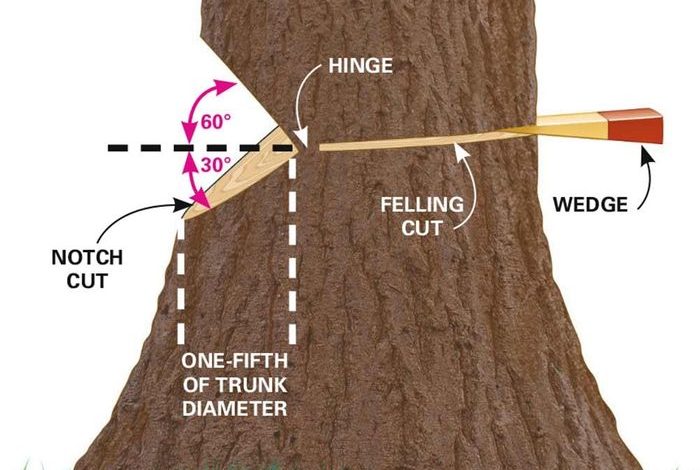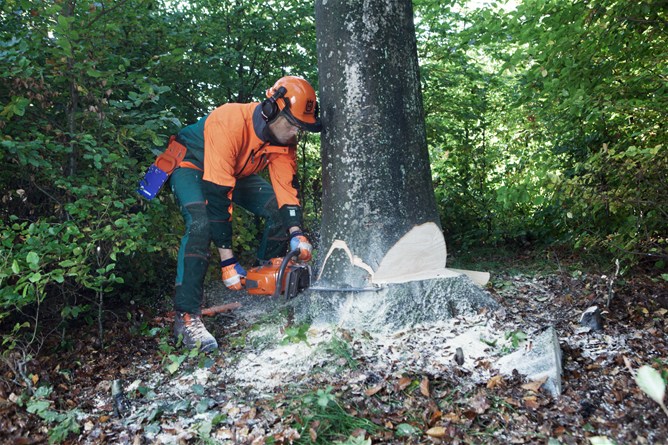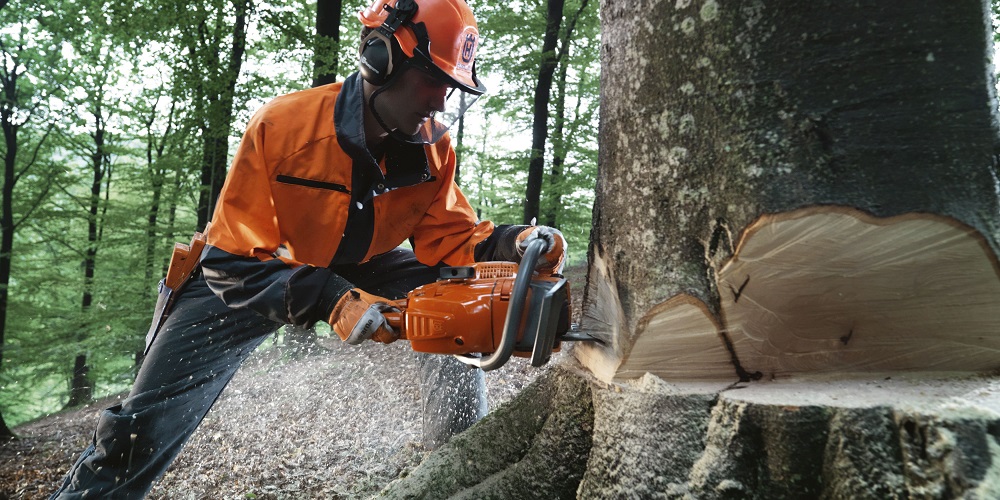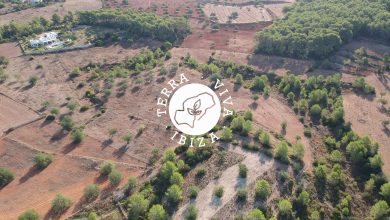How to cut down a tree with a chainsaw

Cutting a tree with a chainsaw may seem like a simple task, but if it is not done correctly it can end up being a problem, especially when it comes to safety.
One of the most common tasks for which we use a chainsaw is cutting trees. A task in which it is essential to be clear about the procedure that we must follow, in order to prevent the tree from falling where it should not or that a lost branch ends up hitting us. So for you to have a clearer idea of how to proceed to cut down a tree safely, we leave you with some tips on how to proceed and gain safety when carrying out this type of work.
Choosing the chainsaw
Although it is not a task per se, as far as the cutting process is concerned, the truth is that having the best chainsaw (In this link you can find some purchase options) according to the caliber of the cut that we are going to make is essential.. We are going to go into detail, but as a reference we should know that experts recommend that the chainsaw bar have a measurement that is 20% greater than the diameter of the trees that we are going to count. This means that a chainsaw with a bar of about 20 centimeters would be enough to cut trees with a diameter of 18 centimeters, while one with a bar of 45 centimeters would be adequate for cuts up to approximately 37.5 centimeters.
In any case, if we use the right technique, it is possible to cut trees up to twice the size of the sword, although for the work that we will normally carry out in our garden, this may not be necessary. But it is always good to know that we have this possibility.
Calculating the fall
One of the most important issues when preparing for the tree cutting process is calculating where the trunk is going to fall. Something for which we must take into account various factors, related to the shape of the tree, its orientation and the distribution of its branches. Specifically, the tree will tend to go to that area in which it has the greatest number of branches and weight, as well as the area towards which the tree itself is oriented, which rarely grows straight.
Worst of all, this fall zone is usually difficult to modify, so unless we do a limb removal, the tree will fall practically in the zone where it naturally has to fall. Something that forces us to take extreme precautions in this regard, as well as to verify safety when throwing it away, as we will see below.

Preparing the drop zone
In order to avoid problems during the fall of the tree, it is necessary to check that there are no elements that the tree could drag during its fall. Among these elements we have electrical or telephone cables, lampposts, fences, antennas or any other element that could end up being a problem.
Something similar happens with the drop zone, from which we must eliminate everything we can, in order to prevent these objects from breaking with said fall. A precaution that we must also extend to the area surrounding the fall, since it is very likely that the branches that are part of the tree will break and can be shot in any direction. So the fewer risks, the better.
Latest security measures
To finish off the security measures, we have a couple of steps left. The first is to establish the escape route. This is the route through which we will escape once the tree starts to fall. The route must be free of objects that could cause a trip and always be focused on the opposite area towards which the tree is going to fall.
In parallel, we must signpost the necessary safety zone to avoid risks, both in the fall zone and in the work zone in which we find ourselves. In these areas there should be no people or animals at the time we start working.
tree limbing
Having said all this, it is time to proceed to the cut itself. The first thing we must cut are those large branches located in the opposite area to the one on which we want the tree to fall. The idea is to leave more weight on the side of the tree that we want it to fall towards, so that gravity and the weight of those branches help us direct its fall.
In general, there is no specific approach as to how this delimbing should be done, although its purpose is to remove the thickest branches in the area, as well as all those branches that may bother during the process of cutting the wedge. Additionally, you can cut a branch that could disturb the fall in the area where the tree falls, although we must always focus the delimbing in the area towards which we want the tree to fall.

making the wedge
With the tree already prepared, it is time to take the chainsaw again and start making the cutting wedge. This cut is made in the base area and is intended to orient the tree towards the ground in the way that suits us. We will start by making a cut at an angle of about 60 degrees, from top to bottom, at a distance of approximately a quarter of the diameter of the trunk.
Next, we make a cut at 30 degrees from the bottom to the top, until it coincides with the point of the previous cut. This wedge is what will guide the fall of the tree, so it is key to focus it in the direction in which we want the fall to occur.
end cut
At this point, it is key that the chainsaw is well charged with gasoline and properly sharpened, since the next cut is vital and cannot be stopped for nothing. We will proceed to cut from the side opposite the wedge towards it, at a height of approximately 3 centimeters above the wedge area and another 3 centimeters before reaching it. The idea of this cut is to eliminate the vertical support of the tree, so that its weight forces the wedge and, with it, its fall.
It is key not to overdo the cut, as we can eliminate the complete support of the tree and cause it to fall prematurely, which will also surely occur without control. On the other hand, if during this process we hear any crackling, indicating that the tree is going to fall, it is vital that we leave the chainsaw on the ground and run through the escape route, until the tree touches the ground.

![Photo of Cabbage Baris (Baris spp): [Characteristics, Detection, Effects and Treatment]](https://www.complete-gardening.com/wp-content/uploads/2022/08/cabbage-baris-baris-spp-characteristics-detection-effects-and-treatment-390x220.jpg)
![Photo of How to Plant Cabbage: [Time, Land, Light, Temperature and Disadvantages]](https://www.complete-gardening.com/wp-content/uploads/2022/08/how-to-plant-cabbage-time-land-light-temperature-and-disadvantages-390x220.jpg)
![Photo of Prune the Poinsettia: [Importance, Time, Tools, Considerations and Steps]](https://www.complete-gardening.com/wp-content/uploads/2022/08/prune-the-poinsettia-importance-time-tools-considerations-and-steps-390x220.jpg)
